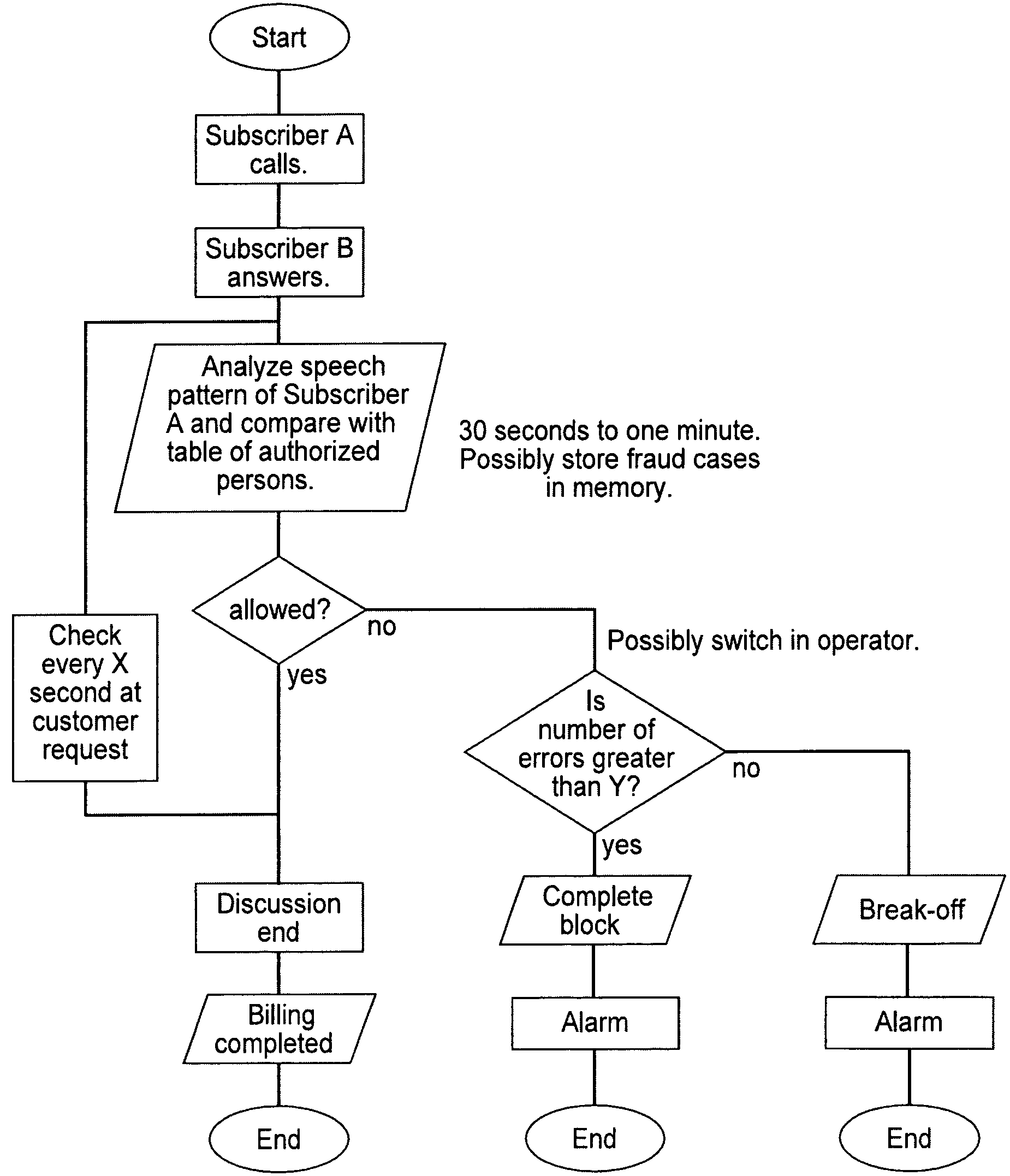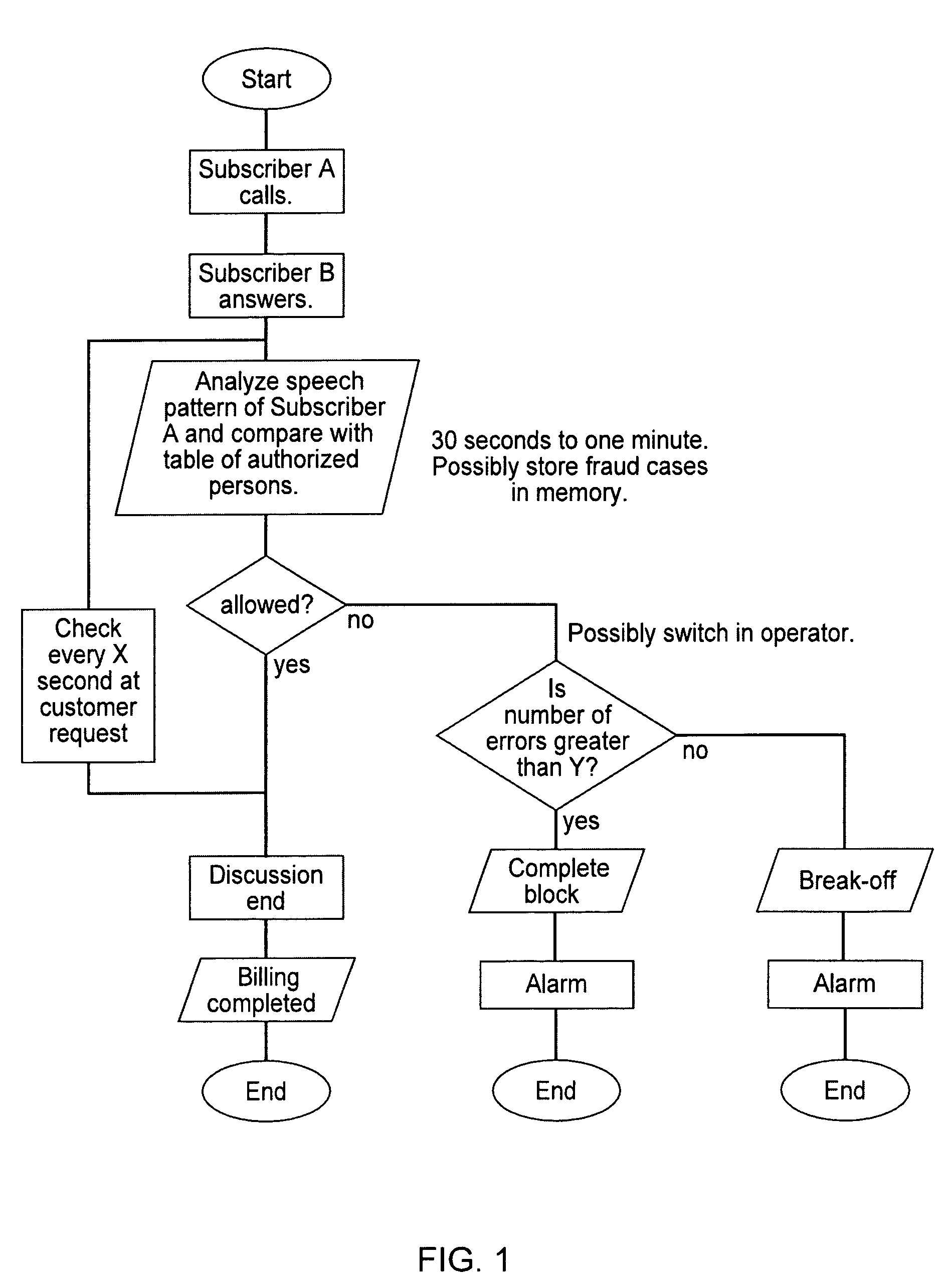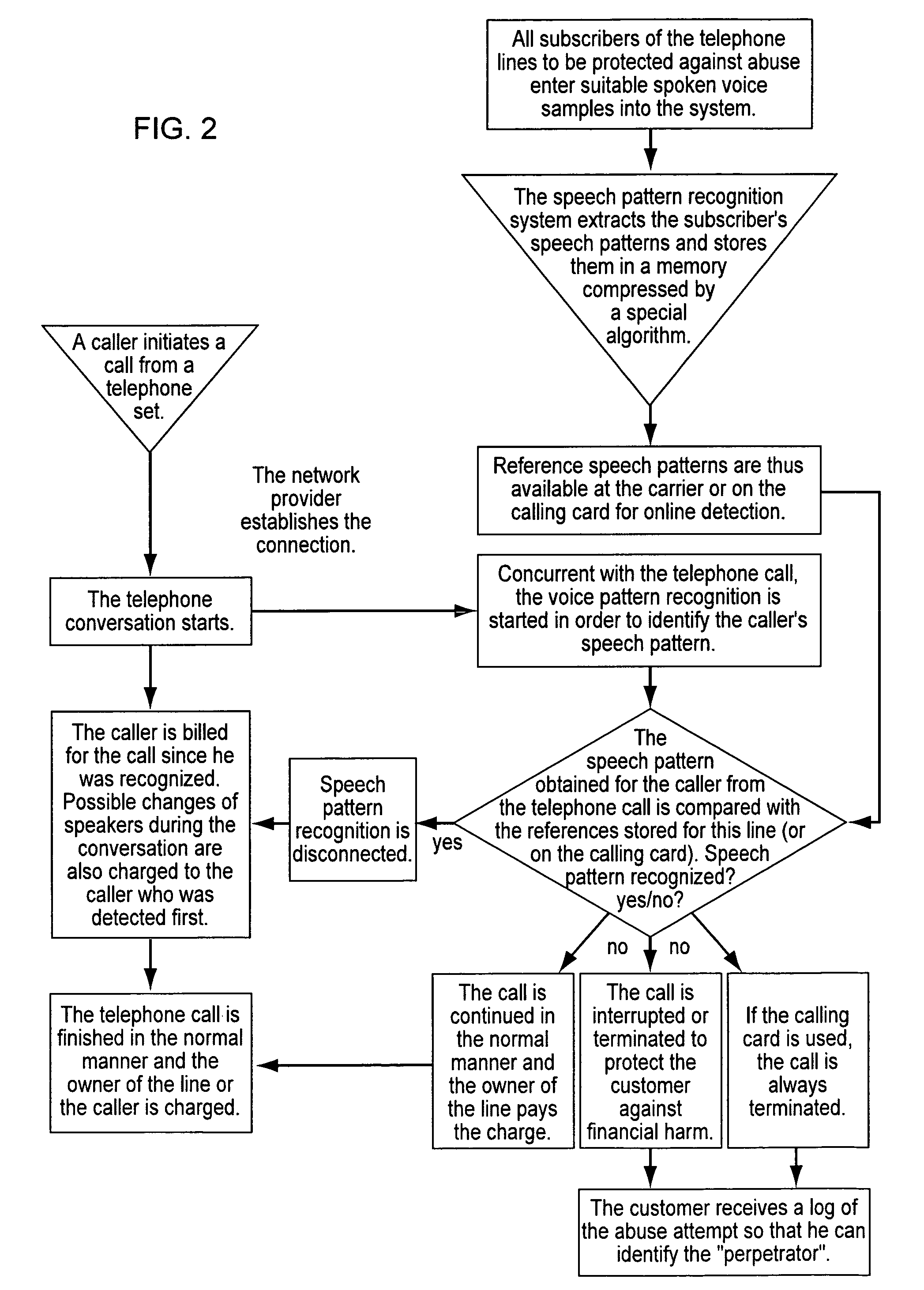Method for verifying access authorization for voice telephony in a fixed network line or mobile telephone line as well as a communications network
a technology for voice telephony and access authorization, which is applied in the field of verification of access authorization for voice telephony in a fixed network line or mobile telephone line as well as a communications network, can solve the problems of abuse by unauthorized third parties or by unauthorized employees of companies, cumbersome method of entering a code before each call, and inapplicability of pbx lines
- Summary
- Abstract
- Description
- Claims
- Application Information
AI Technical Summary
Benefits of technology
Problems solved by technology
Method used
Image
Examples
Embodiment Construction
[0051]FIG. 1 schematically shows a sequence of operations of an embodiment of the method of the present invention. At the start of the method, subscriber A calls a destination number. The connection is established as soon as subscriber B answers. Typically, both subscribers begin to speak. The voice signals of subscriber A are automatically tapped and analyzed, the analysis lasting a predetermined time span, approximately 30 seconds to one minute. A interoffice trunk, via which the voice signals between both users are transmitted, is accessed without interfering with the transmitted signal, so that the access verification does not affect the conversation.
[0052]The voice signal of subscriber A is analyzed, i.e., compressed by voice recognition algorithms, the thus-produced speech pattern being compared with reference data records stored in a table of authorized names. If the actual voice signal can be assigned to one of the reference data records, then the subscriber is considered to...
PUM
 Login to View More
Login to View More Abstract
Description
Claims
Application Information
 Login to View More
Login to View More - R&D
- Intellectual Property
- Life Sciences
- Materials
- Tech Scout
- Unparalleled Data Quality
- Higher Quality Content
- 60% Fewer Hallucinations
Browse by: Latest US Patents, China's latest patents, Technical Efficacy Thesaurus, Application Domain, Technology Topic, Popular Technical Reports.
© 2025 PatSnap. All rights reserved.Legal|Privacy policy|Modern Slavery Act Transparency Statement|Sitemap|About US| Contact US: help@patsnap.com



